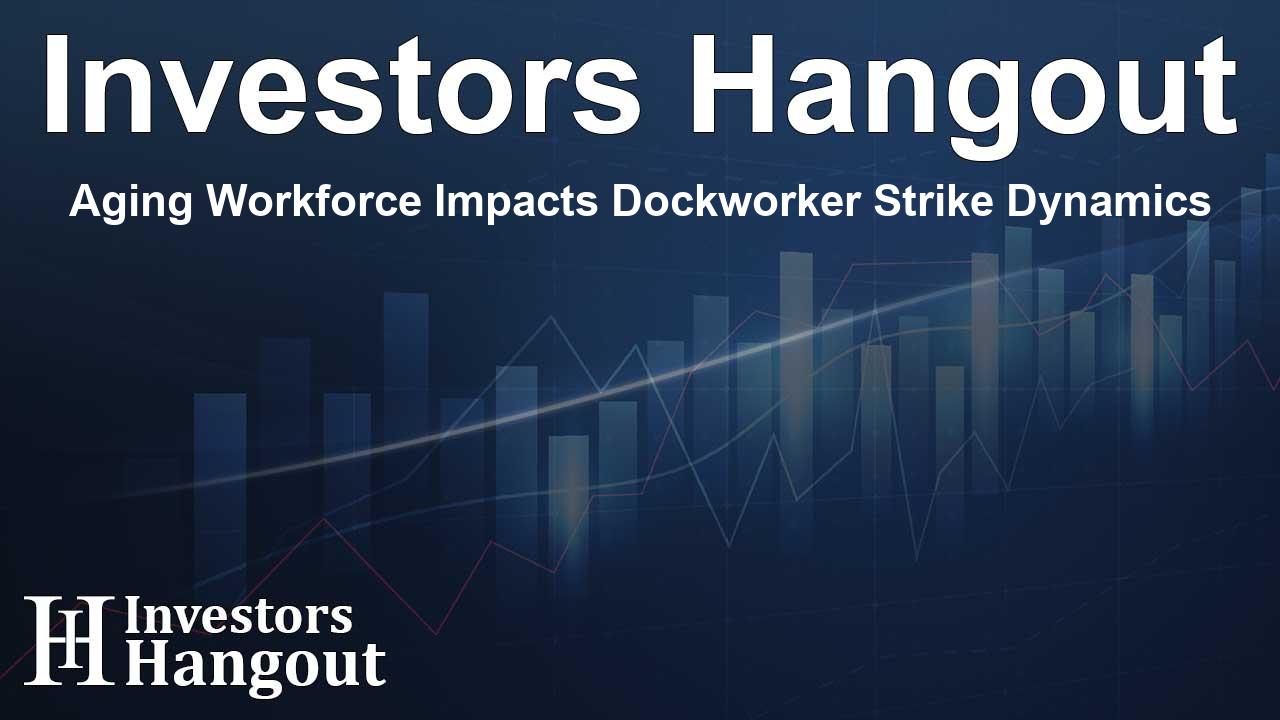Aging Workforce Impacts Dockworker Strike Dynamics

Understanding the Dockworker Strike
The ongoing strike involving nearly 45,000 dockworkers along the East Coast and Gulf of Mexico has significantly disrupted supply chains that handle everything from bananas to automobiles. This work stoppage halted essential operations, indicating the critical role dockworkers play in the economy.
The cost of this labor action is staggering, estimated at a staggering $5 billion daily impact on the U.S. economy according to analyses from financial experts.
The Collision of Generational Trends and Workplace Dynamics
At the heart of this strike lies more than just economic concerns. It highlights a crucial intersection of sociotechnical trends that are reshaping the workplace. The issue transcends immediate supply chain concerns and extends into the challenges posed by an aging workforce and how the next generation approaches work in the industry.
Aging Workforce: A Key Factor in the Strike
A demographic shift is underway, with statistics revealing that there has been minimal growth in workers aged 25 to 54 since 2019, despite a notable increase of nearly 5 million workers aged 65 and older. This shift is affecting all industries, particularly transportation and warehousing, where nearly 25% of the workforce is over 55 years old. The implications of this shift are clear—dockworkers, known for their physically demanding roles, are facing a looming shortage as many approach retirement.
While casual observers may view age 50 as merely the midpoint of one’s career, the physical toll required in dockworking environments presents a starkly different reality. Comparatively, managing freight and cargo is far more demanding than working in less labor-intensive jobs.
The Hunt for New Talent
As a significant portion of the longshoremen inch closer to retirement age, the industry is encountering obstacles in attracting younger talent to fill these crucial roles. This upcoming shortage could represent a new kind of supply-chain crisis, marked by a dearth of young workers eager to step into positions held by aging professionals.
Trends in Blue-Collar Work
Despite a post-pandemic interest from younger generations in blue-collar jobs, recent reports indicate that interest levels have plateaued. Younger individuals often prioritize work-life balance and flexibility, factors that are not typically aligned with the demands of dockworking.
The landscape of the labor market is rapidly evolving, and as automation becomes a more prevalent solution for pressing workforce challenges, labor unions are strenuously opposing these changes, viewing automation as a threat to their livelihoods.
Automation and Its Rising Influence
The growing reliance on automation to enhance efficiency in ports is evident as dockworkers resist changes that could ultimately reshape their roles. This presents a complicated scenario: while unions are attempting to stave off automation, fewer younger workers are inclined to work in such physically demanding conditions, making automation increasingly necessary.
Various countries are facing their labor shortages and have resorted to automation as a solution. For instance, major ports in Europe and Asia are implementing advanced technologies in response to dwindling workforce availability.
Global Comparisons and The Future
In Europe, the Port of Rotterdam has reported a significant shortfall of workers, while China is bolstering its automation efforts in ports like Shanghai to maintain a competitive edge amidst a declining labor force. Japan is also innovating with plans for extensive automated transport systems, further illustrating a global shift towards technology-driven solutions to labor shortages.
Ultimately, this port strike symbolizes larger trends within the American labor landscape as older generations retire and younger ones seek more technologically oriented professions. The evolving need for traditional industries to adapt in this changing environment is critical.
Frequently Asked Questions
What is the primary cause of the dockworker strike?
The strike is largely due to labor demands alongside ongoing concerns about the aging workforce and the necessity for automation in ports.
How does an aging workforce impact the dockworker sector?
The aging workforce leads to shortages of available labor as many dockworkers near retirement age without sufficient young workers to replace them.
What role does automation play in this labor scenario?
Automation is increasingly seen as a solution to the labor crisis, as it can compensate for the declining number of younger workers willing to engage in physically demanding jobs.
Why are younger workers reluctant to join the dockworker ranks?
Younger generations prioritize job flexibility, work-life balance, and technology-driven careers, often shying away from the strenuous demands of dockworking.
How are other countries addressing similar labor challenges?
Countries are turning to automation to tackle labor shortages similarly to those present in the U.S. with extensive new technology initiatives.
About The Author
Contact Owen Jenkins privately here. Or send an email with ATTN: Owen Jenkins as the subject to contact@investorshangout.com.
About Investors Hangout
Investors Hangout is a leading online stock forum for financial discussion and learning, offering a wide range of free tools and resources. It draws in traders of all levels, who exchange market knowledge, investigate trading tactics, and keep an eye on industry developments in real time. Featuring financial articles, stock message boards, quotes, charts, company profiles, and live news updates. Through cooperative learning and a wealth of informational resources, it helps users from novices creating their first portfolios to experts honing their techniques. Join Investors Hangout today: https://investorshangout.com/
The content of this article is based on factual, publicly available information and does not represent legal, financial, or investment advice. Investors Hangout does not offer financial advice, and the author is not a licensed financial advisor. Consult a qualified advisor before making any financial or investment decisions based on this article. This article should not be considered advice to purchase, sell, or hold any securities or other investments. If any of the material provided here is inaccurate, please contact us for corrections.
